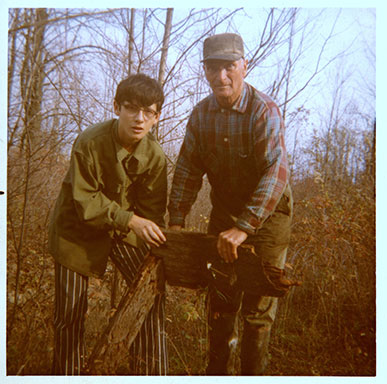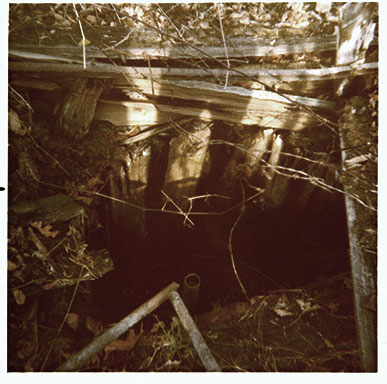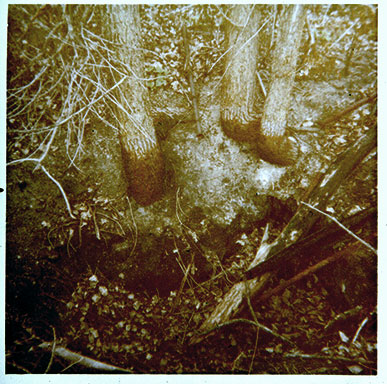Potential Risks and Hazards
Historical Context Definitions Early Decommissioning Methods Public Safety Help to Landowners Resources
Used with permission from the Ministry of Natural Resources.
Unplugged or poorly plugged oil and gas wells pose risks and potential for groundwater contamination. Oil and gas wells may provide direct pathways from the briny waters found with oil and gas deposits to the overlying fresh groundwater used for drinking water.
Legacy oil and gas wells can release chemicals such as hydrogen sulfide and methane into the air. Health effects can vary, depending on how much is in the air. Exposure to lower levels may cause minor health effects, such as irritation of the eyes, nose, and throat. Exposure to higher levels may have more serious health effects. In small, confined spaces, like cisterns or buildings, chemicals can build up. Exposure to them can be more dangerous and even fatal.
Unidentified boy and man holding old cribbing from a well. Image courtesy of OGSR
Note the following risks and hazards:
- Leaking wells: if fluids are escaping from the well, there may be surface indications such as soil staining and vegetation die-off.
- Hydrogen sulfide: a poisonous gas (rotten egg smell) that may be released from leaking wells.
- High pressure/flammability: natural gas and oil may be released at high pressures around wells. These fluids and gases are flammable and combustible.
- Subsidence: sinking of the ground over and existing or past underground cavity created from solution-mining of soluble minerals like salt.
- Blowouts: occur when unexpected natural gas is found, and gas/oil/fluid is released at the drilling rig, resulting in fires or spills.
- Contamination: of soil or groundwater





 Subscribe to this page
Subscribe to this page